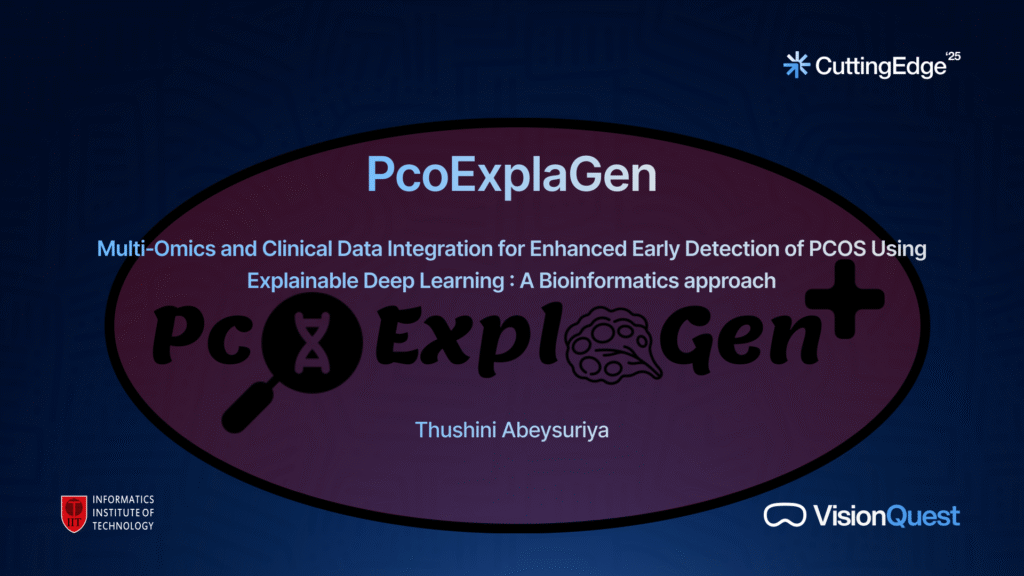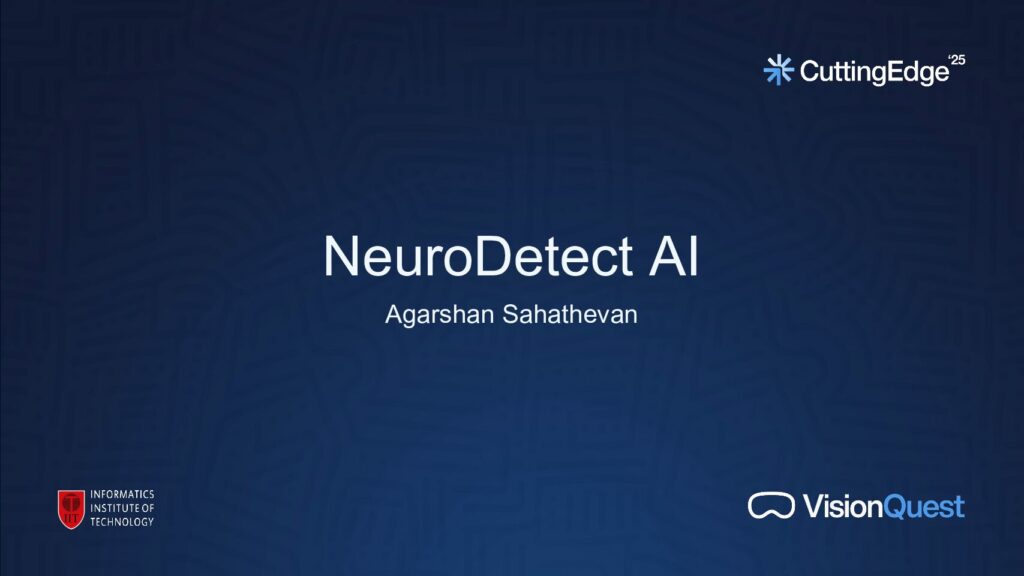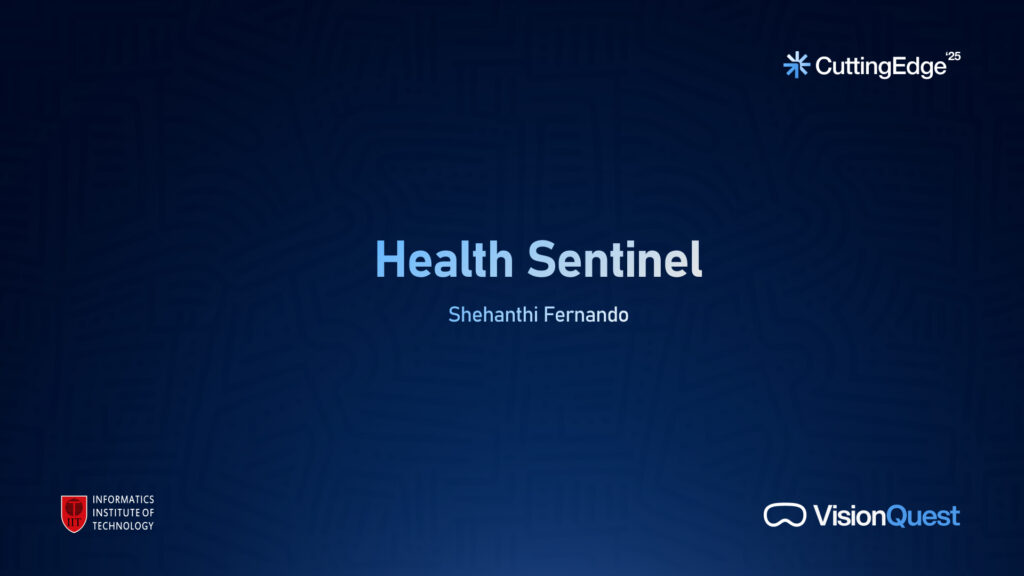Multi‑Omics and Clinical Data Integration for Enhanced Early Detection of PCOS Using Explainable Deep Learning – A Bioinformatics Approach

Polycystic Ovary Syndrome (PCOS) is a complex endocrine disorder affecting up to 10% of
women of reproductive age, with early detection remaining challenging due to its
heterogeneous presentation. Traditional diagnostic approaches relying solely on clinical
markers often miss subtle molecular indicators, while genomic analyses alone fail to
incorporate crucial clinical context, resulting in delayed diagnosis and suboptimal treatment
outcomes.
This project addresses these limitations through a novel multi-modal approach integrating
omics data (from GEO datasets including GSE5090, GSE54248, GSE54250) with clinical
biomarkers using a sophisticated architecture combining Graph Neural Networks (GNNs) and feed-forward networks. The implementation features separate processing pathways: omics data flows through GNN layers (GATConv/GCNConv) modeling gene-gene interactions, while clinical markers pass through conventional neural networks. These pathways converge in a fusion mechanism with adaptive weighting based on clinical indicators like AMH levels.
Domain adaptation techniques mitigate batch effects across datasets, while transfer learning leverages pre-trained encoders to improve generalizability.
Comprehensive evaluation demonstrates the system’s effectiveness with a cross-validated mean AUC of 0.653 (±0.116). Refined threshold tuning yields a precision of 0.975, recall of 0.870, and classification accuracy up to 95%. The integration of explainable AI tools provides transparent visualization of feature importance, showing that AMH levels, β-HCG
measurements, and their derived ratios consistently emerge as critical predictors. This approach not only enhances diagnostic accuracy but also provides actionable insights into the molecular mechanisms underlying PCOS.
NeuroDetect AI

Brain tumors represent a significant global health concern, where precise and timely diagnosis is crucial for effective treatment and patient prognosis. Current reliance on manual interpretation of Magnetic Resonance Imaging (MRI) can be time-intensive, subject to inter-observer variability, and susceptible to diagnostic errors. This is particularly evident in differentiating various tumor types and in assessing glioma malignancy, the latter often necessitating invasive biopsy procedures which carry inherent risks.
This project, NeuroDetect, addresses these diagnostic challenges by developing and evaluating a sophisticated dual-component computational system.
The first component targets multi-class brain tumor characterization (Glioma, Meningioma, Pituitary, No Tumor). It employs an ensemble approach, integrating features from an established convolutional network (ResNet50) with a bespoke network architecture enhanced by refined feature selection mechanisms, achieving approximately 98.55% accuracy on a public Kaggle MRI dataset.
The second component focuses on non-invasive glioma grade differentiation (Low-Grade vs. High-Grade). A novel hybrid computational architecture was developed, which synergistically combines information extracted from two distinct pre-trained image analysis backbones (ResNetV2 and EfficientNetB0). This is further augmented by a targeted feature-weighting mechanism applied after information fusion from 2D axial FLAIR and T1ce MRI slices (BraTS 2019 dataset), yielding approximately 91.86% accuracy and 0.83 AUC.
NeuroDetect is prototyped as a user-friendly mobile application, demonstrating the potential for advanced computational tools to provide accessible, accurate, and rapid decision support for clinicians, with the aim of improving diagnostic pathways and patient care.
CliniGuide – Foundational Framework for Medication Recommendation based on Reasoning

CliniGuide addresses the growing need for precise, context-aware medication recommendations in healthcare by leveraging large language models (LLMs) enhanced with Knowledge Distillation (KD) and Retrieval-Augmented Generation (RAG). Unlike generic AI systems that often lack detail and transparency, CliniGuide focuses on delivering explicit, personalized medication suggestions including dosage and medication details while ensuring interpretability aligned with clinical best practices.
The system follows a two-phase framework. First, a teacher LLM generates distilled data to fine-tune a smaller, more efficient student model. This KD process preserves critical medical knowledge while optimizing performance and reducing computational demands. In the second phase, RAG is employed: the system retrieves domain-specific information from a vector store based on user input and combines it with the student model’s reasoning using chain-of-thought prompt engineering. This ensures that recommendations are not only contextually relevant but also transparent and explainable.
Preliminary evaluations demonstrate improved clarity and accuracy in medication suggestions. Metrics such as BLEU (0.0196), ROUGE-1 (0.2674), ROUGE-2 (0.0519), and ROUGE-L (0.1348) indicate that CliniGuide effectively captures key concepts and maintains relevance, with room for refinement in textual precision. Overall, CliniGuide represents a significant step toward AI-driven, patient-specific medication recommendation systems that are trustworthy, actionable, and clinically aligned.
Health Sentinel

“Health Sentinel” is a digital platform designed to modernize and streamline the reporting and monitoring of notifiable diseases in Sri Lanka, mitigating the inefficiencies and delays in the current manual reporting system. “Health Sentinel” enables healthcare professionals to report cases in real-time, monitor diseases and take timely actions to prevent the spread of diseases. With this system in place, reporting of cases will be instant, unlike the current process, which can take up to two weeks and in some instances, cases do not get reported at all.
The system accommodates all key stakeholders in the process: doctors, hospitals, medical officers of health (MOH), public health inspectors (PHI) and the epidemiology unit allowing each of them to perform their respective responsibilities through a centralized and role-based platform. Features like real time notifications, interactive dashboards and map-based visualization enhance the operational efficiency. The system also accommodates the public and enables them to view the confirmed cases and public-related events hosted in their area.
This streamlined workflow not only improves the speed and accuracy of notifiable disease reporting but also strengths early detection, response coordination and public health decision making across the country.
